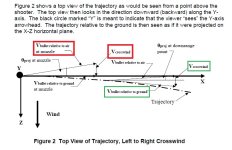The impulse due to firing at a constant temperature is invariant given a cartridge and a defined weapon. The surest way to ascertain the value of the impulse is via ballistic pendulum tests. These tests will reveal the total impulse but not the rate at which impulse is generated (actually, the force as a function of time). In the case of a muzzle loader or hand-operated, bolt-action weapon, the impulse is delivered over a short time, on the order of a few factors times the time it takes the bullet to transit the bore of the weapon; this is, perhaps, subtly modified by the stock of the weapon and the material used to construct the stock (e.g., polymers are notoriously rate-sensitive materials). Everything changes when semiautomatic (one shot per pull of the trigger), automatic (continuous fire at a cyclic rate until the trigger is released or the weapon expends its ammunition), or recoil mechanisms are introduced. In the case of a gas-operated weapon, the bolt is unlocked when the bullet is close to reaching the muzzle, and the bolt is thrust rearward by the propellant gases against the action of a spring. The impulse generated before the bolt is unlocked passes through the bolt to the receiver and stock of the weapon. Some, if not all of the impulse generated after the bolt starts its rearward motion goes into the bolt and gets transmitted to the receiver and stock at a more leisurely pace. As a result, the impulse is spread over a longer time, and the average force associated with the impulse is reduced. Further, in some weapons, a buffer (spring/damper element) is put in series with the bolt spring to smooth out the impulse delivery. In a blow-back automatic weapon (the bolt is not locked, but reacts inertially against a spring caused by the pressure at the base of the cartridge case), virtually all the projectile momentum and much of the propellant gas momentum is transmitted to the motion of the bolt, dramatically altering the rate at which impulse is transmitted to the receiver and stock of the weapon.

